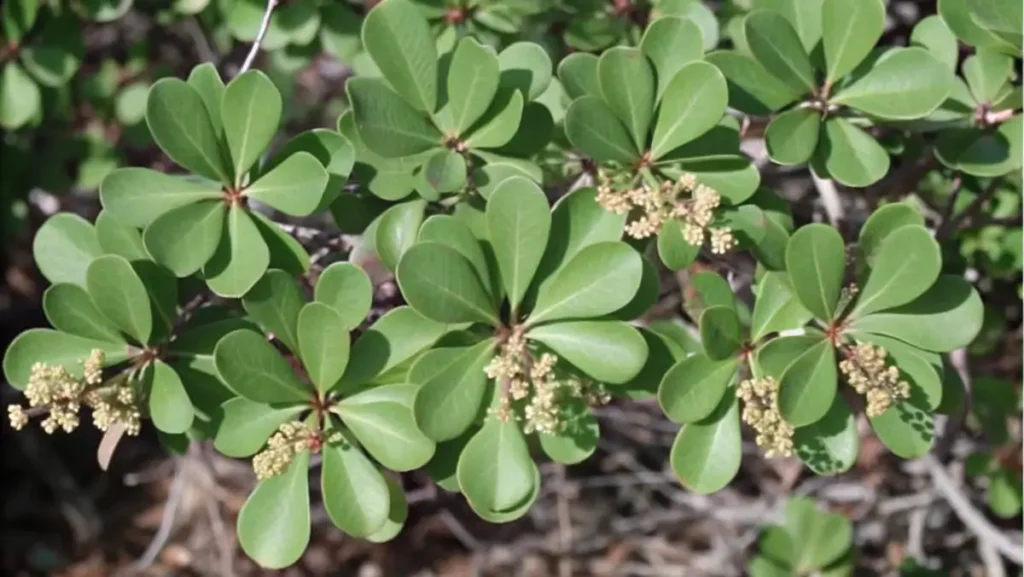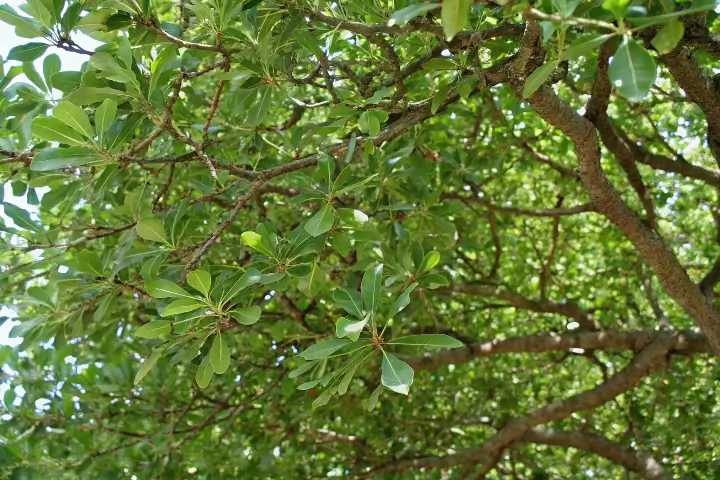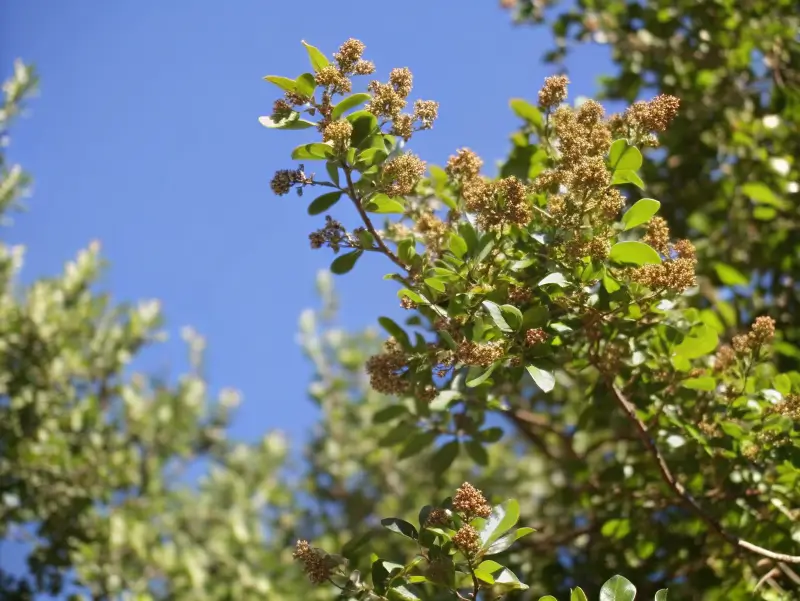
Curious about the black olive tree and why it stands out among ornamentals? This piece covers its background, growth habits, best care practices, and practical tips for growing indoors or outdoors. Expect straightforward advice on watering, pruning, pest control, and even harvesting small fruits. Personal insights keep it fun and relaxed. Prepare to discover simple methods for making this tropical evergreen thrive. Dive in, and become a proud caretaker today!
Table of Contents
Introduction to the Black Olive Tree
Defining the Black Olive Tree
I’ve always been intrigued by the black olive tree, often called Bucida buceras in botanical circles. Although “olive” is in its name, you might be surprised to learn that it’s not a European olive. Instead, it’s a tropical broadleaf evergreen that prefers warm, humid places.
- Known as the Shady Lady in some areas
- Features wide canopies that offer welcome shade
- Not actually related to the standard olive used for oil or table fruit
This unique tree stands out for its layered, umbrella-like branches. Honestly, it’s one of my favorite shade trees—perfect for a hot summer’s day when you just want a cool spot under dense, dark-green leaves.
Brief History and Origin of the Black Olive Tree (H3)
I remember seeing a grand black olive tree in Florida at the start of the spring season. It towered along a breezy beach road, withstanding coastal winds like a champ.
- Common in South Florida, the Caribbean, and parts of Central America
- Appreciated for its salt tolerance and strong resilience
- Has become popular for ornamental landscaping in both residential and public areas
If you live in a sunny, warm spot, this tree can be a perfect companion, offering green foliage year-round and a certain laid-back vibe.
Botanical Characteristics and Varieties
Understanding Bucida buceras
Bucida buceras is the scientific name for this tropical gem. One look at its trunk will reveal a smooth greyish-brown bark, often accentuated by a tiered canopy that seems sculpted by nature.
- Evergreen tropical flora, keeping leaves all year
- Sometimes called the Shady Lady black olive or Bullet Tree
- Commonly used as a street or decorative tree in warm climates
I find its layered canopy particularly appealing—a kind of natural topiary that looks fancy without much effort.
Notable Varieties and Synonymous Names
Many folks call it simply the Shady Lady, while some reference smaller ornamental versions that can be grown in pots. A friend of mine even turned his black olive tree into a bonsai-style project. Talk about a fun way to start conversations at a neighborhood barbecue!
- Shady Lady black olive: A popular choice
- Bullet Tree: Name sometimes used in Central America
- Ornamental dwarf variations: Great for balcony spaces or smaller yards
Choosing the Right Environment for Your Black Olive Tree

Optimal Soil Conditions and Sunlight Requirements
Let’s face it—nobody wants their precious tree to wither. The black olive tree thrives in well-draining soil, preferably neutral or slightly alkaline. If you have rocky or sandy soil, add some organic matter to help with moisture retention.
- Dig holes in soil that drains well
- Six to eight hours of direct sunlight
- Avoid frequent soggy conditions around the roots
I usually do a quick soil check by digging a small test hole and adding water to see if it drains fast. If it puddles for hours, that might be a no-go.
Climate Considerations: Heat, Humidity, and Frost
Hot and humid weather is your best bet for a happy black olive tree. In USDA zones 10 and 11, you can plant it outdoors without much hassle.
- Thrives in tropical and subtropical climates
- Handles salt spray in coastal areas
- Sensitive to cold snaps and frost
If winter temperatures dip below 40°F, consider potting the tree instead. That way, you can move it indoors during those chilly nights.
Part 4: How to Plant and Grow Black Olive Trees
Propagation Methods: Seeds vs. Cuttings
When I first tried growing a black olive tree, I tested both seeds and cuttings. Seeds can be slow, though it’s super rewarding to watch them sprout. Cuttings may establish faster but require a healthy, mature donor tree.
- Seeds: Budget-friendly but takes time
- Cuttings: Faster results if you have access to a mature tree
- Keep propagation setups warm and slightly humid
A bright windowsill can work if the outside temperatures are too cold. Just remember to keep the soil moist—but not waterlogged.
Step-by-Step Planting Guide
I like to break the process down to reduce mistakes:
- Pick a good location: Sunny area with good drainage.
- Dig a hole: Twice as wide as the root ball.
- Position the tree: Spread roots carefully.
- Backfill and water: Add soil gradually, then water deeply.
- Mulch the surface: Helps lock in moisture and slow weed growth.
Trust me, that initial watering is crucial. It removes air pockets around the roots and helps the tree settle.
Watering Schedules and Fertilization Tips
After planting, aim to water once or twice a week during the first year. Once the roots are established, the black olive tree can handle brief dry spells without freaking out.
- Use a balanced fertilizer (like 10-10-10) in spring
- Water deeply rather than frequent light sprinklings
- Consider compost or organic amendments for sandy soils
It’s also a good idea to do a gentle top-dress of compost each year to keep roots healthy.
Key Maintenance Practices for a Thriving Black Olive Tree

Pruning Techniques and Tools
I’m no master arborist, but a little regular pruning can keep your black olive tree looking tidy. Use pruning shears for smaller branches, and sanitize your tools to stop the spread of diseases.
- Prune for shape in late winter or early spring
- Remove dead or crossing branches
- Clean tools with rubbing alcohol before/after pruning
I once forgot to sterilize my pruning shears. Let’s just say my poor plant didn’t appreciate the germs I accidentally passed on.
Soil Amendments and Mulching
In areas with sandy or low-nutrient soil, mixing in some compost helps the black olive tree grow strong. Top it off with a nice layer of mulch, about two to three inches deep.
- Compost can boost nutrient content
- Mulch reduces weeds and retains moisture
- Leave a small gap around the trunk to prevent rot
Mulch is my secret weapon—makes life easier, and everything looks neat.
Seasonal Care and Ongoing Upkeep
Different seasons call for minor tweaks. In spring, check for pests and fertilize lightly. In summer, water a bit more if there’s a drought. If you live in a colder zone, watch out for those sudden cold snaps in late fall or winter.
- Spring: Light pruning and fertilization
- Summer: Maintain watering schedule
- Winter: Protect from frost if needed
Being observant really helps. If leaves start looking scorched, adjust your watering. If you spot pests, act quickly.
Common Pests and Diseases Affecting the Black Olive Tree
Identifying Typical Tree Pests
The black olive tree is fairly tough, but pests like whiteflies, scale insects, and aphids can show up. In my backyard, scale insects once went wild, leaving a sticky residue on the leaves.
- Watch for leaf discoloration or curling
- Sticky “honeydew” secretions can attract ants
- Horticultural oil or insecticidal soap can help
A quick fix often involves spraying targeted areas and pruning heavily infested branches, if any.
Effective Disease Prevention and Treatment
Fungal diseases can be a problem if conditions are overly damp. Ensuring open airflow around the foliage helps a lot.
- Avoid overwatering or waterlogged soils
- Space the trees to improve airflow
- Remove infected branches at first sign of fungal growth
Healthy soil is crucial. A robust immune system in a tree is kind of like a robust immune system in us.
Harvesting and Culinary Uses of Black Olives
When and How to Harvest Black Olives
If you’re dealing with a black olive tree that produces actual edible olives (some ornamental varieties don’t), timing is everything. Typically, olives turn dark purple or black when ready.
- Wait for full color change
- Taste test for flavor, though they’re often bitter raw
- Use gloves if the olives are messy
Some folks harvest in late fall or early winter, while others wait until the olives soften a bit. Honestly, it depends on your local climate conditions.
Can You Eat Black Olives Right Off the Tree?
Sure, but they’ll likely be incredibly bitter. If you want that rich flavor, you’ll need to cure them in brine, salt, or water to remove the tartness.
- Bitter taste usually requires curing or brining
- DIY curing can take weeks or months
- Store-bought olives spare you the time
If you’re feeling adventurous, homemade cured olives can be super satisfying.
Traditional and Modern Culinary Applications
Whether you cure your own or grab a jar from the store, black olives are fantastic in:
- Pasta dishes
- Salads and cheese boards
- Tapenade or spreads
They bring a savory pop to meals, and you can get creative with herbs like rosemary or thyme.
Indoor and Outdoor Growing of Black Olive Trees
Benefits of Indoor Black Olive Trees
If you live where winters get frosty, you might still pull off an indoor black olive tree in a container. Place it near a sunny window or use grow lights.
- Control temperature and humidity indoors
- Enjoy greenery year-round
- Makes an eye-catching centerpiece
Just be mindful that indoor air can be dry, so you may need a humidifier or misting routine.
Outdoor Landscaping and Decorative Uses
In warmer areas, the black olive tree can be planted outdoors, showing off that layered canopy under bright sunshine. It’s commonly used in public parks, driveways, and even some city sidewalks.
- Perfect ornamental shade tree
- Can handle wind and coastal conditions
- Pairs nicely with other evergreen tropical flora
If you’re exploring additional landscaping options, check out a Japanese Blueberry Tree. It also produces a striking look in warm climates, making it a worthy companion plant.
Frequently Asked Questions About the Black Olive Tree
Can You Grow Black Olive Trees?
Yes, you can! In USDA zones 10 and 11, they’ll typically do great outdoors. If you’re in a colder region, use containers and bring them inside during chilly months. If you’re curious about more details on hardy plants, you can skim official info on the USDA’s website.
How Big Does a Black Olive Tree Get?
In the wild, it can reach 40 to 50 feet, with a crown just as wide. In a residential landscape, that might be more like 20-30 feet—still enough to create some majestic shade. Pruning can keep it smaller if space is limited.
Can You Eat Black Olives Right Off the Tree?
Yes, but they’re usually too bitter without curing. If you have the patience for a brining project, go for it. Otherwise, store-bought olives might suffice.
Can a Black Olive Tree Grow Indoors?
Absolutely. It just needs enough light, consistent watering, and a warm environment. Watch out for fluctuating indoor climates—heater vents can dry out the leaves.
Conclusion and Final Thoughts
I hope this friendly look at the black olive tree has sparked your curiosity. Whether you’re planting one outdoors for shade, caring for an indoor version to brighten up your living room, or dreaming of munching on home-cured olives, you’ve got a fantastic evergreen to keep you company.Short bullet points to remember:
- Black olive tree thrives in warmth and plenty of sun.
- Water regularly in the first year; then it’s fairly drought-tolerant.
- Prune it to maintain shape and keep branches healthy.
- Keep an eye out for common pests like scale or aphids.
Thanks for reading, and may your black olive tree adventures be fun and fruitful! If you’re anything like me, you’ll find joy in watching this tropical broadleaf evergreen flourish—whether by the beach, in your backyard, or right next to your couch. Happy gardening!
